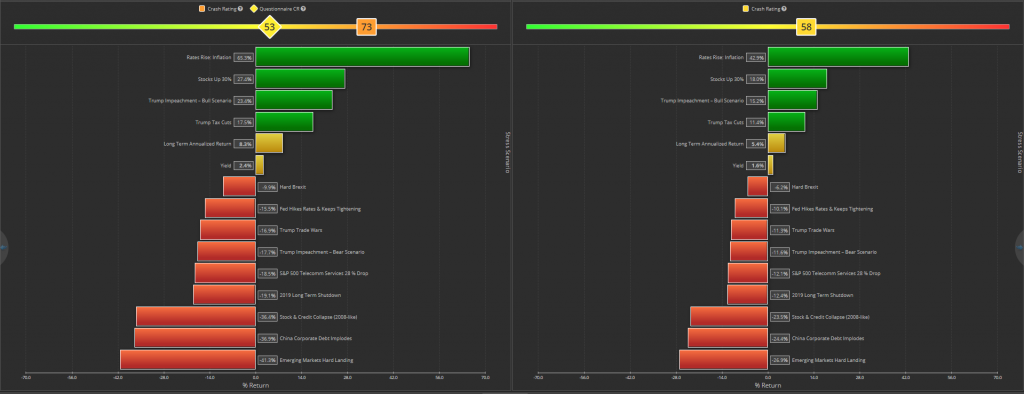
As a Fiduciary, How Well Do You Know Your Risk?
Recently FINRA has released its 2019 Risk Priorities and Examination Priorities Letter, where investment suitability remains its top priority. The main category in the suitability area continues to be deficient quantitative suitability determinations or related supervisory controls. However, it is still common that advisors ask their clients to trust their expertise when it comes down to selecting appropriate investments for a portfolio.
This may be true, however, if the claim of being the investment expert can be backed up by hard quantitative evidence such as portfolio performance in different extreme events it will give such claim more merit. People tend to forget about risk when the markets do well. The revelation comes when the volatility picks up and unrealized portfolio losses become a direct threat to the family nest egg. For example, the possibility of a Hard Brexit may become very real in the near future. How can that affect your portfolio?
The suitability process should start even before any investment options are selected for a portfolio composition. It should start by asking a client about his/her risk tolerance, return expectations and financial goals. But even when you have all the information, it is difficult to quantify that as part of the FINRA requirement.
In the Portfolio Crash Test, the suitability process can be started with the risk questionnaire. A prospect or client can answer a set of questions which will help to quantify their risk tolerance by generating a risk tolerance score. The advisor can use that score as a guide to constructing an investment portfolio. The risk tolerance score can also be used to adjust portfolio risk if it is not aligned to better match portfolio investments with the risk tolerance. For example, the questionnaire risk tolerance score is 53, but the portfolio risk is 73.

It indicates risk misalignment in the portfolio based on the risk tolerance of the client. An advisor can suggest a less aggressive portfolio based on optimization which has a risk score of 58, and will be more in line with the client’s risk tolerance (Be sure to read more about optimization in the Portfolio Crash Test HERE).